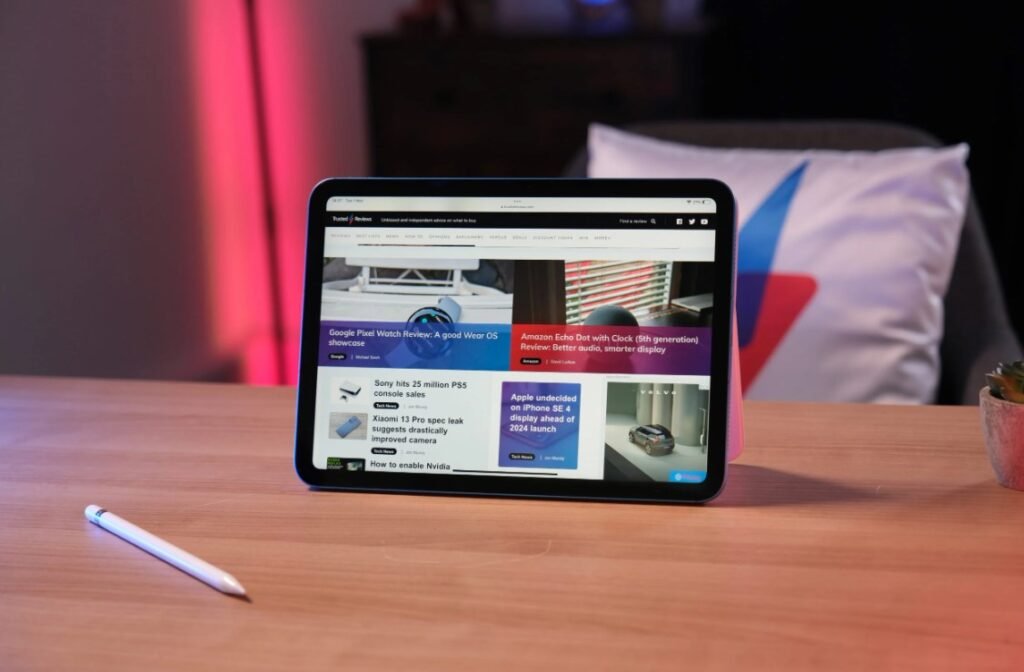Apple is reportedly planning to upgrade its iPad Pro lineup with OLED displays next year, according to a new report from The Verge. The tech giant is said to be working on two OLED iPad Pro models, one with an 11-inch screen and another with a 13-inch screen, which will replace the current 12.9-inch mini-LED iPad Pro.
OLED stands for organic light-emitting diode, a type of display technology that uses organic materials to emit light when an electric current passes through them. OLED displays have several advantages over LCD displays, such as higher contrast, wider viewing angles, faster response times, and lower power consumption. OLED displays can also turn off individual pixels to achieve true blacks, which enhances the picture quality and reduces the backlight bleeding effect.

Mini-LED, on the other hand, is a variant of LCD technology that uses thousands of tiny LED lights to backlight the display panel. Mini-LED displays can offer better brightness, contrast, and color accuracy than standard LCD displays, as they can dim or brighten specific zones of the screen depending on the content. However, mini-LED displays still rely on a backlight layer, which means they cannot achieve the same level of black as OLED displays.
Apple introduced its first mini-LED iPad Pro earlier this year, which features a 12.9-inch Liquid Retina XDR display with 2,596 local dimming zones and a peak brightness of 1,600 nits. The mini-LED iPad Pro was praised for its stunning display quality, but it also faced some issues such as blooming, uneven brightness, and increased thickness and weight.
Why is Apple switching to OLED for iPad Pro?
According to The Verge, Apple is switching to OLED for its iPad Pro models for several reasons. One of them is to improve the display performance and power efficiency of the tablets, as OLED displays can offer better contrast, color accuracy, and response times than mini-LED displays. OLED displays can also enable thinner and lighter designs, as they do not require a backlight layer.
Another reason is to reduce the production costs and supply chain complexity of the iPad Pro models, as OLED displays are easier and cheaper to manufacture than mini-LED displays. Apple currently sources its mini-LED displays from a single supplier, Taiwan-based TSMT, which has limited production capacity and high defect rates. OLED displays, on the other hand, are widely available from multiple suppliers, such as Samsung and LG, which can offer more competitive prices and higher quality.
A third reason is to differentiate the iPad Pro models from the iPad Air models, which are expected to adopt mini-LED displays next year. Apple is reportedly working on a new 12.9-inch iPad Air model, which will feature a mini-LED display and a similar design to the current iPad Pro model. By switching to OLED for the iPad Pro models, Apple can create a clear distinction between the two product lines and justify the higher price of the iPad Pro models.
When will the OLED iPad Pro models launch?
The Verge claims that the OLED iPad Pro models will launch in the first half of 2024, which means they could be announced as early as March or April next year. The report also suggests that the OLED iPad Pro models will come in the same sizes as the current models, 11-inch and 12.9-inch, but the latter will be reduced to 13-inch to accommodate the OLED display.
The report also notes that Apple is not abandoning mini-LED technology, as it will continue to use it for other products, such as the MacBook Pro and the iMac. Apple is also said to be exploring micro-LED technology, which is a more advanced version of mini-LED that can offer even better performance and efficiency. However, micro-LED technology is still in its early stages of development and is not expected to be ready for mass production anytime soon.
Apple has not officially confirmed or denied the report, so it is best to take it with a grain of salt until further evidence emerges. However, if the report is true, it means that Apple fans can look forward to a major upgrade for the iPad Pro models next year, which will offer a stunning OLED display and a sleeker design.
